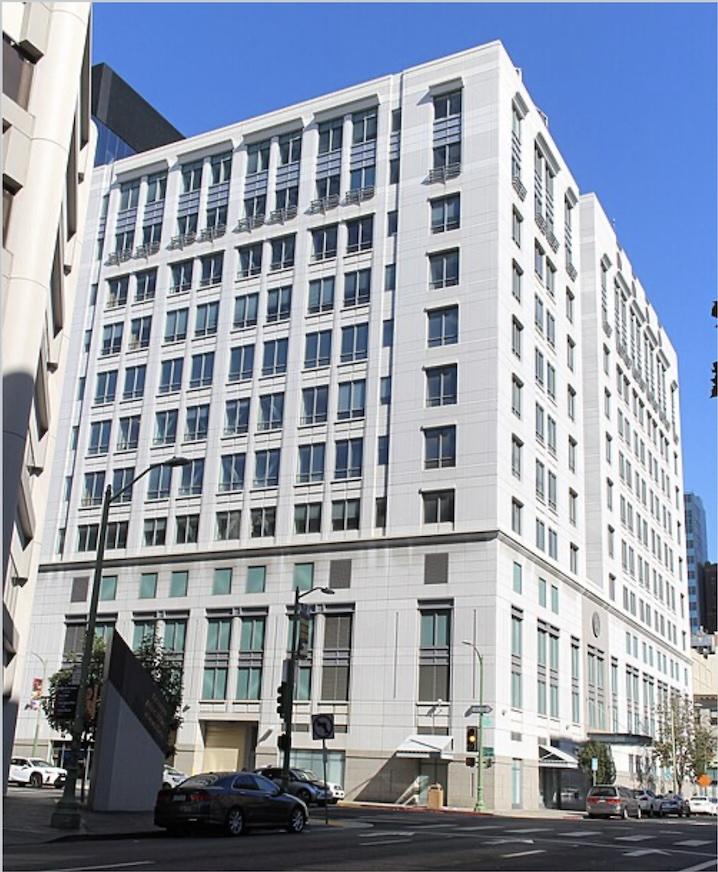 Jie Wang owns three rental properties in Oakland. Her whole family relies on income from tenants paying their rent.
Jie Wang owns three rental properties in Oakland. Her whole family relies on income from tenants paying their rent.
Many have lost their jobs during the pandemic. Eviction moratoriums protect tenants who can’t pay part or all of their rent. But small housing providers like Wang still have mortgages, utilities and other expenses. A lack of government support puts pressure on them to sell their properties.
“Nobody can escape from this coronavirus,” Wang said. “I have a very good relationship with all my tenants. I try to help them.”
Wang spoke on a recent panel hosted by Ethnic Media Services along with other housing rights advocates and researchers. The panel discussed the risk of treating all landlords the same.
The word “landlord” stirs up connotations of large real estate corporations, wealthy enough to maintain their properties through the pandemic. However, small landlords, often referred to as mom-and-pop landlords, have been hit hard by losses in income due to tenants who have been at least partially unable to pay their rent during the pandemic.
According to the Urban Institute, individual investors like Wang rather than large conglomerates own more than 75% of one-to-four-unit rental properties. In addition, mom-and-pop landlords of color are more likely to own duplexes, triplexes and fourplexes.
Their rent rates tend to be cheaper, so they’re also more likely to draw minority tenants.
Maeve Brown is the executive director and founder of Housing and Economic Rights Advocates, a statewide nonprofit law office that provides free legal services to low- and moderate-income Californians. She works with many people of color who have never had any training on how to manage their properties and consistently charge below-market rent rates.
“Another key part of the story here is our failure to appreciate what small landlords are actually providing — our failure systemically to recognize that they really are affordable housing providers,” Brown said. “If localities and our state government actually recognized the truth of that, that should have an impact on the policy choices that they make.”
Mom-and-pop landlords often are also more connected to their communities and tenants.
John Wong, the founding chairman of the Asian Real Estate Association of America, has lived in San Francisco for nearly 67 years and been a realtor for over 40. In the briefing, he described the relationships he’s experienced and witnessed between mom-and-pop landlords and their tenants.
“I talk about this spectrum of housing providers because I think it speaks to our response to COVID,” Wong said.
He added that mom-and-pop landlords tend to know their tenants personally.
“The relationships have typically been very, very amicable,” he said.
Rent relief programs like the $2 trillion CARES Act have primarily benefited larger, wealthier real estate corporations, leaving behind mom-and-pop landlords.
“The policy choices that the state has made have just made no distinction between large landlords and small landlords,” Brown said. “State policy choices have squarely placed the burden of nonpayment of rent on the shoulders of small landlords — of small, affordable housing providers.”
The danger with placing that burden on mom-and-pop housing providers is that it pressures them into selling their properties to investors and real estate conglomerates.
The result is that California will lose more and more of its affordable housing.
“If they lose their property, they’re probably going to lose it to an investor who will charge as much money as the market can possibly bear,” Brown said.
Landlords of color are also more likely to have a mortgage and lower income, so the pressure to sell during the pandemic is higher, according to Urban Institute.
There may be new hope for mom-and-pop landlords and their tenants in the form of a new rental assistance program, but it comes with a caveat.
The new California rental relief program intended to help the state’s most vulnerable renters and landlords opened March 15. The program, which comes from Senate Bill 91, extends the eviction moratorium to June 30 and draws from $2.6 billion in federal funds for rent relief.
“The SB 91 moratorium and the state rental assistance program, in my opinion, is the most important thing to have for smaller mom-and-pop housing providers,” Wong said.
Tenants and landlords both have to fill out certain parts of the online application, available on the California state website Housing is Key.
The first group of eligible renters are those with greatest need — households making 50% or less of the area’s median income, or anyone who has been unemployed for at least 90 days.
The next group includes households making 80% or below the area’s median income. Undocumented tenants are also eligible.
Data from Urban Institute shows that, throughout the U.S., less than a third of tenants and less than half of landlords are aware of federal rental assistance programs. This is why John Wong aims to spread information about rental assistance programs to mom-and-pop landlords, especially those who may be linguistically isolated.
“I personally have a heavy focus on making sure that individuals who have English as not their primary language have access to information that these funds are available,” Wong said.
The way the rent relief works is 80% of a tenant’s rent owed between April 1, 2020, and March 31, 2021, will be paid directly to the landlord, so long as the landlord agrees to forgive the remaining 20% of the back rent.
But this new rental assistance program doesn’t distinguish between small and corporate landlords. For mom-and-pop landlords like Jie Wang, absorbing the remaining 20% of unpaid rent can be a crippling blow after a year of unpaid rent.
“I’m open to the low-income renter,” Jie Wang said. “As long as I can survive, I will receive all the tools to help me and to survive this very difficult situation.” (By Isabella Bloom for Ethnic Media Services and The Richmond Pulse)







